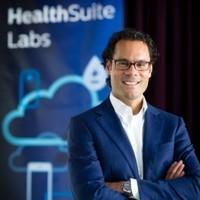Philips’s salespeople in particular are being affected by the company’s switch to digital offerings. Although in 2016 around seventy percent of company revenues still came from selling traditional products and services, Philips’s salespeople are increasingly selling new digital, integrated solutions. Compared to sales of products, selling solutions requires salespeople to engage with a more diverse group of more senior leaders in order to identify how Philips can help address healthcare needs.
In addition, Philips has introduced new roles for engaging with customers—particularly healthcare organizations—to help them articulate issues and design solutions around them, rather than to just request traditional products and services. For example, the company’s growing group of Healthcare Transformation Services consultants helps customers improve patient journeys and deliver care more effectively.
And to help healthcare organizations attack some of their most complex healthcare problems, Philips offers HealthSuite Labs: standalone, fee-based multi-week engagements including multi-day workshops, intended to help existing and potential customers articulate a vision for change and an approach to fulfilling that vision. HealthSuite Labs sessions assemble a cross-functional group of leaders from Philips and a healthcare client and, in many cases, that client’s stakeholders, such as insurance companies or government leaders. Lab sessions incorporate practices from design thinking and agile development as part of a structured methodology for co-creating integrated solutions in order to improve the way care is provided.
Philips expects to continue evolving its structures, roles, and processes as issues and opportunities emerge.
DIGITAL TRANSFORMATION IS A LONG JOURNEY
In 2017, Philips’s share price was at a fifteen-year high, and revenues and EBITA of the HealthTech business were growing.[foot]Royal Philips, Third Quarter 2017 Results, October 23, 2017, p.23, from the Philips website. Yet like every company we’ve studied, Philips is in the early stages of its digital transformation.
As shown in figure 1, digital transformations for established companies are likely to be long journeys. To deliver a digital value proposition, companies must:
- Ensure that they are digitized for operational excellence
- Experiment to learn what digital technologies can do that customers will find valuable
- Build technical and business platforms to support digital offerings
- Redesign their organization to deliver a growing and consistently enhanced portfolio of digital offerings
Of course, this journey is not linear. Architecting for rapid innovation involves enabling continuous adoption of new enterprise processes, experiments with new technologies, and development of new platform services. By embracing constant change, companies can zero in on their targeted value proposition.




